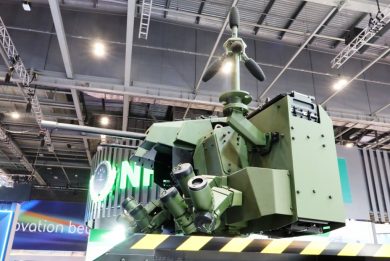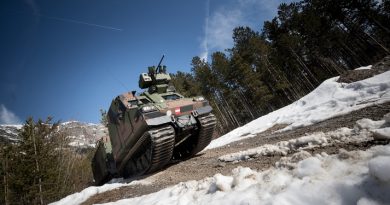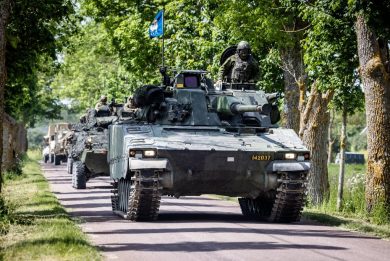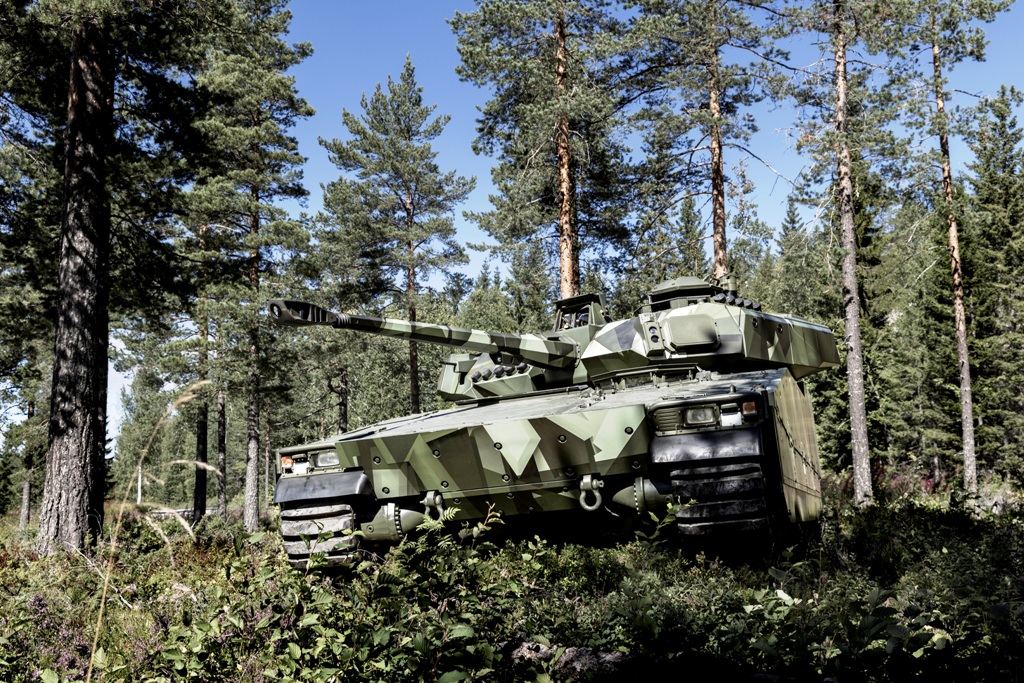
DSEI 2023 – BAE Systems Hägglunds: production times and volumes are the critical issue
The Russia-Ukraine conflict highlighted the limited capacities of western defence industries to considerably increase their production rate when facing a major crisis. The definition “war economy” has been mentioned many times but not much has yet been done. BAE Systems Hägglunds is the producer of the most widely used modern infantry fighting vehicles designed and built in Western Europe. At DSEI 2023 EDR On-Line met the company President, Tommy Gustafsson-Rask
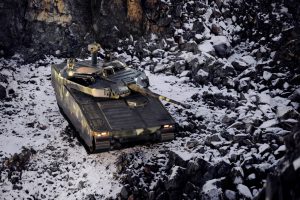
“There are two dimensions we must face nowadays, one is time from order to delivery while the other one is the capacity we can deliver on,” Tommy Gustafsson-Rask says. Considering the CV90, should a customer order a standard configuration time to delivery is around 24 months, which increase by around one year should some development work be done to add some specificities “The same applies to BvS10 tracked articulated amphibious all-terrain armoured vehicles, so I would advise nations that want to order it to join the ‘Three Nations Initiative’, which would allow them reducing the lead time. Should they decide going on their own with key adaptations they might receive their vehicles in the late 2030s,” the company President adds.
“Long lead items BAE Systems Hägglunds needs to procure from its supply chain are the most critical elements. “Gun sights, transmissions. torsion bars, are typically long lead items which need between 36 and 24 months to be delivered to us,” he explains, adding that a way to shorten lead time is to put an order for long lead items and while awaiting their delivery discussing with the company. As for smaller features he underlines that the ‘just in time’ era is now over, and security stocks are being built up to ensure at least a 30 days resilience in order to avoid stopping the assembly line for the lack of minor pieces, with more important ones having a 60 or 90 days stock capacity.
Switching to production capacity, “our advantage that through the years we have always had requirements of industrial cooperation, once known as direct offset.
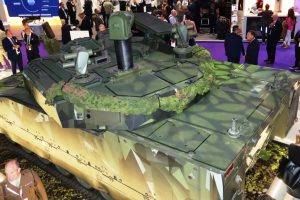
I think we have been very good on doing that and we can now consider it a competitive advantage,” Tommy Gustafsson-Rask explains. In practice, the advantage is that when now numbers go up, BAE Systems Hägglunds has partners that can work for it. One example is that CV90 new variants ordered by Sweden will be manufactured in Norway, where also turrets can be produced by CHSnor. Van Halteren is doing the same in the Netherlands, where it is producing the first serial turrets for the Dutch upgrade that is in fact a new turret. Denmark is currently doing maintenance and support and should be fully involved in partial manufacturing when the upgrade programme will be launched, a contract being expected later this year.
What is and will always come out from the company Örnsköldsvik facility is the chassis. “Empty painted chassis leave our production plant in northSweden, as we do in house the chassis welding and machining, which will then be completed with sub-assemblies like engines and transmissions in the customers’ countries, when required,” the company President told EDR On-Line.
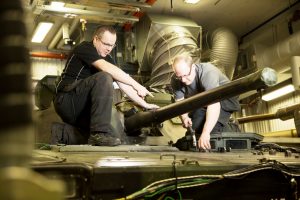
Personnel from our partners in customer nations attend courses in Sweden, when we build the first 5 to 10 complete vehicles, and is involved in all key activities it will have to perform at home. What has been done in the past is going to be done for example in the Czech Republic, where CTS Special will do chassis assembly while turret welding and assembling will be the task of Koval Systems. A similar pattern will also be followed in the Slovak Republic. “Decentralising production allows us a four times-growth,” Tommy Gustafsson-Rask points out.
Currently the company order book includes around 400 CV90s, some 700 BvS10 and around a 100 Beowulf, the unarmoured version of the BvS10. “this means between three and five years production,” the President tells us confirming this meaning a four-time growth, but adding that he is looking at a six-time increase which means the company is investing in new production capabilities.
However before increasing production capabilities, BAE Systems Hägglunds had to cope with the supply chain, which must be capable to follow that growth while ensuring resilience and compatible lead times. “We have been working very hard to have a commitment from the supply chain for stepping up production four times, and I consider we are now in a fairly good position towards a possible six times growth,” the company top manager tells EDR On-Line.
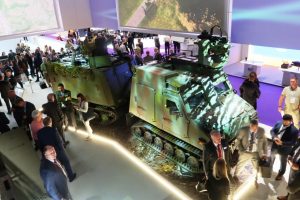
Of course not all supplies could follow, in some cases a dual or treble source system had to be put in place, as it happened for some elements of the BvS10 which production stepped from 50 to 200 vehicles per year, which means nearly one per day compared to the around one per week of the past. And going back to standardisation issues, the company President makes it clear that if a customer is ready to accept a solution that fits 95% of its requirements it can get the vehicles in a decent timeframe, should he want 100% delivery time might increase between five and seven years.
Remaining on the BvS10 subject, Tommy Gustafsson-Rask could not avoid speaking of the licensing and manufacturing agreement signed with Larsen & Toubro of India, the latter company becoming the prime for the Indian market. It upgraded the vehicle to meet the requirements of the Indian Armed Forces, this new variant being known as the BvS10-Sindhu.
“We have been trying to sell BvS10s to India for at least 15 years. Now they have adopted the Make India process that requires going to market through a local partner, which allowed us to finally penetrate that country,” the company President explained, not excluding at all a possible production under license. Something that might also extend to other countries, while in the past, with low rate production, that was not feasible. BAE Systems Hägglunds has specific teams of experts in transferring knowledge and production, the company having done so for 25 years and is ready to continue along that path.
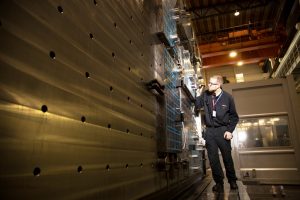
As said, all CV90s production starts in Örnsköldsvik, where steel is cut and the different plates are welded together to produce the naked chassis. “We have invested in new expensive machinery in order to multiply our initial production capability first by four and then by six,” Tommy Gustafsson-Rask tells EDR On-Line, “so we acquired two new welding robots and we are currently adding another one. Around 90% of the welding is done by robots, and it takes 36 to 40 hours to complete the operation, the machines being supervised by a single employee. We also acquired a new laser cutting machine which has three times the capacity of the old one, as well as two milling machines, a third one being expected shortly.” EDR On-Line understood that no major manpower increase was required, these machines working mostly automatically, the company having invested in manpower some six-seven years ago. Currently the Swedish facility is still working on a single shift, with a logistic shift carrying out maintenance work n the off time, however according to the company President a reorganisation of the shifts might be done soon.
Time has become critical. “As one of my people told me, Tommy earlier on we had a lot of time but no money. Now, we have a lot of money but no time!”
Photos courtesy BAE Systems and P. Valpolini

